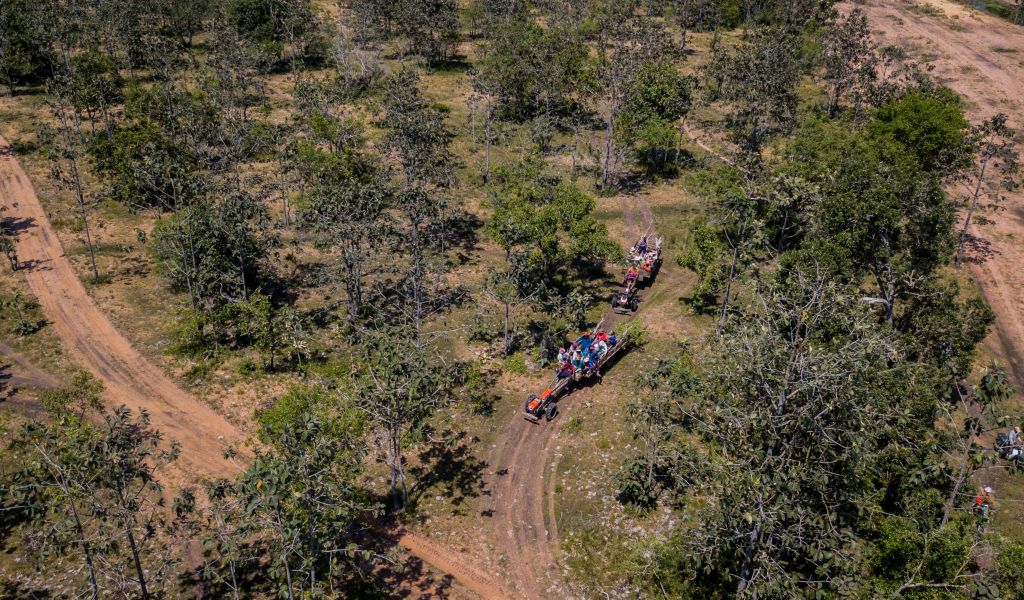Community forestry assessment guide first of its kind

“Community Forestry Participatory Assessment: A Guide for Practitioners,” is aimed at specialists from government agencies, research centres, community associations and non-governmental organizations working to develop and support community forestry. It can also be used by members of community forest user groups to assess the quality of their community forestry arrangements.
It is the first how-to guidebook produced specifically for those working at the field level in ASEAN countries.
The guide, which was published in February 2020, focuses on assessing community forests with user groups to gain a clearer picture of what is working and what is not.
“Accurate and participatory assessments are critical tools for determining how effective a community forest is in delivering economic, environmental and social benefits to its users,” says David Gritten, one of the lead authors and a former senior program officer at RECOFTC.
“This publication lays out a detailed, easy-to-follow participatory assessment method that ensures local people who use forests are directly involved. When they are included, they take ownership of solutions to the challenges and opportunities they face. The authors and field testers were careful to ensure that the handbook outlines specific steps that will draw accurate and comprehensive information from the assessment participants.”
The illustrated guide provides both conceptual and practical details on how to conduct an assessment. Practitioners are walked through the process of making initial contact with community forest user groups. They then learn how to set up a representative assessment group and to design appropriate assessment sessions to satisfy the needs of the community.
It includes a complete ready-to-use assessment plan, reporting templates, and links to further online resources that can support the practitioner.
The guide can be used to assess the different types of community forests that exist in Southeast Asia. It helps practitioners assess the success of existing schemes under formal tenure regimes. It can also be used to explore customary community forestry practices in their own right, as well as examine their potential to be incorporated into statutory systems.
A need for local knowledge
The assessment guide was prepared in direct response to a request from the ASEAN Senior Officials on Forestry, who recognized the importance of increasing the understanding of community forestry at the community level. It was supported by the ASEAN-Swiss Partnership on Social Forestry and Climate Change (ASFCC), a project of which RECOFTC is a partner. RECOFTC staff wrote and field tested the guide in Myanmar and Thailand in 2018 and 2019.
Community forestry has the potential to help achieve multiple socio-economic and environmental objectives at national and landscape levels. Governments in Southeast Asia are recognizing that ambitious community forestry programs can do much more than protect forest areas. They can also address poverty, livelihood development, equality issues and biodiversity conservation.
Significant progress has been made implementing these programs, but questions still remain about how effective they are at the local level. Governments, donors and civil society continue to invest in community forestry programs, but little is known about the vitality of individual schemes.
“FAO and ClientEarth have done recent work on assessing community forestry at the national level, with a focus on the legal environment and supporting institutions,” says Gritten.
“However, their work doesn’t really support doing the assessment at the community level. RECOFTC saw this work as a priority, especially considering the significant growth of community forestry in the ASEAN region in the last 10 years. The guide is a very practical tool that was developed specifically for people and organizations working at the community level. It really fills a gap.”
The hope is to make the assessment accessible to those who work on community forestry in the region, which will support a better understanding of community forestry in the region.
RECOFTC’s work is made possible with the support of the Swiss Agency for Development and Cooperation (SDC) and the Swedish International Development Cooperation Agency (Sida)

